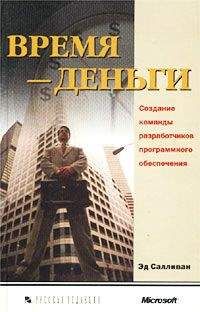19.4. Conklin J., Begeman M. gIBIS : A hypertext Tool for Exploratory Policy Descussion // ACM Transactions on Office Information Systems. 1988. Oct. P. 303-331.
19.5. Englebart D., English W. A research center for augmenting human intellect // AFIPS Conference Proceedings, Fall Joint Computer Conference. San Francisco (Dec. 9-11, 1968). P. 395-410.
19.6. Apple Computer, Inc. Macintosh Human Interface Guidelines. Reading, Mass. : Addison-Wesley, 1992.
19.7. Кажется, шина Apple Desk Top Bus могла бы аппаратно поддерживать две мыши, но операционная система такой возможности не предоставляет.
19.8. Royce W. W. Managing the development of large software systems: Concepts and techniques // Proceedings, WESCON (Aug., 1970). Перепечатано в ICSE 9 Proceedings. Ни Ройс, ни другие не считали, что можно завершить процесс разработки, не пересматривая начальных документов. Модель была предложена в качестве идеальной. См.: Parnas D. L., Clements P. C. A rational design process : How and why to fake it // IEEE Transactions on Software Engineering. 1986. Vol. SE-12, N 2. Feb. P. 251-257.
19.9. В результате значительной переработки DOD-STD-2167 появился DOD-STD-2167A (1988), который допускает новые модели, например спиральную, но не обязывает более к их применению. К сожалению, MILSPECS, на который ссылается 2167A, и приведенные в качестве иллюстрации примеры по-прежнему, как сообщает Бём, используют каскадную схему. Специальная группа научного совета по обороне под руководством Ларри Друффела и Джорджа Хейлмейера в отчете 1994 года «Report of the DSB task force on acquiring defense software commercially» рекомендовала повсеместное использование новых моделей.
19.10. Mills H. Top-down programming in large systems // Rustin R. (Ed.). Debugging Techniques in Large Systems. Englewood Cliffs, N. J. : Prentice-Hall, 1971.
19.11. Parnas D. L. On the design and development of program families // IEEE Trans. on Software Engineering. 1976. Vol. SE-2, N 1. March, P. 1-9; Parnas D. L. Designing software for ease of extension and construction // IEEE Trans. on Software Engineering. 1979. Vol. SE-5, N 2. March. P. 128-138.
19.12. Harel D. Biting the silver bullet // Computer. 1992. Jan. P. 8-20.
19.13. Следующие статьи являются основополагающими в вопросе скрытия данных: Parnas D. L. Information distribution aspects of design methodology // Carnegie-Mellon Univ., Dept. Of Computer Science Technical Report. 1971. Feb.; Parnas D. L. A technique for software module specification with examples // Comm. ACM. 1972. Vol. 5, N 5. May. P. 330-336; Parnas D. L. (1972). On the criteria to be used in decomprosing systems into modules // Comm. ACM. 1972. Vol. 5, N 12. Dec. P. 1053-1058.
19.14. Идею объектов первоначально набросали Hoare и Dijkstra, но первое и наиболее важное развитие они получили в языке Simula-67, который разработали Dahl и Nygaard.
19.15. Boehm B. W. Software Engineering Economics. Englewood Cliffs, N. J. : Prentice-Hall, 1981. P. 83-94; 470-472.
19.16. Abdel-Hamid T., Madnick S. Software Project Dynamics : An Integrated Approach. Ch. 19 // Model enhancement and Brooks’s law. Englewood Cliffs, N. J. : Prentice-Hall, 1991.
19.17. Stutzke R. D. A mathematical expression of Brooks’s Law // Ninth International Forum on COCOMO and Cost Modeling. Los Angeles, 1994.
19.18. DeMarco T., Lister T. Peopleware : Productive Projects and Teams. New York : Dorset House, 1987.
19.19. Pius XI. Encyclical Quadragesimo Anno // Ihm, Claudia Carlen. (Ed.). The Papal Encyclicals 1903-1939. Raleigh, N. C. : McGrath. P. 428.
19.20. Schumacher E. F. Small Is Beautiful : Economics as if People Mattered. Perennian Library Edition. New York : Harper and Row, 1973. P. 244.
19.21. Schumacher, см. примеч. 20. P. 34.
19.22. Наводящий на мысли настенный плакат гласит: «Свобода печати принадлежит тому, у кого он есть». (Компьютер)
19.23. Bush V. That we may think // Atlantic Monthly. 1945. Vol. 176, N 1. Apr. P. 101-108.
19.24. Кен Томпсон из Bell Labs, создатель Unix, давно понял значение большого экрана для программиста. Он придумал, как на свою примитивную электронную трубку Tektronix выводить 120 строчек текста в две колонки. Он держался за свой терминал, пока сменилось целое поколение быстрых трубок с маленьким экраном.


![Эдвард Йордон - Путь камикадзе [Смертельный марш]](https://cdn.my-library.info/books/223167/223167.jpg)


